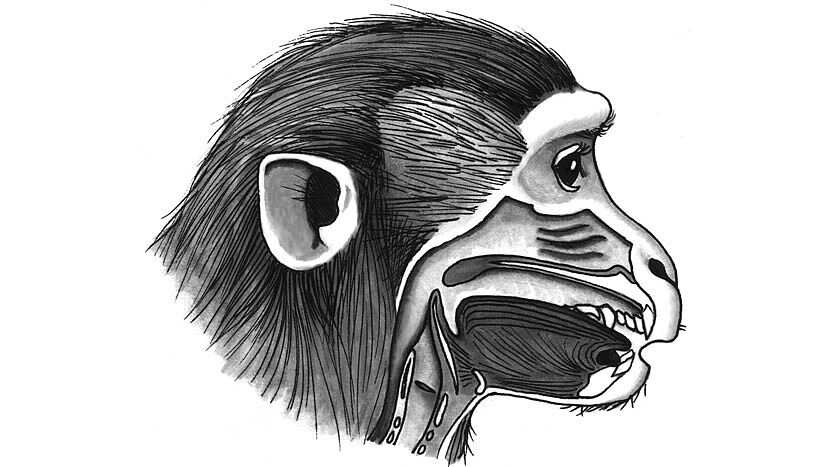Why can't monkeys speak?
09. Dezember 2016Vocal anatomy is not the problem
Monkeys and apes are unable to learn new vocalizations, and for decades it has been widely believed that this inability results from limitations of their vocal anatomy: larynx, tongue and lips. But an international team of scientists, led by Tecumseh Fitch at the University of Vienna and Asif Ghazanfar at Princeton University, has now looked inside monkeys' vocal tracts with x-rays, and found them to be much more flexible than thought before. The study indicates that the limitations that keep nonhuman primates from speaking are in their brains, rather than their vocal anatomy.
The scientists used x-ray video to see within the mouth and throat of macaque monkeys induced to vocalize, eat food, or make facial expressions. They then used these x-rays to build a computer model of a monkey vocal tract, allowing them to answer the question "what would monkey speech sound like, if a human brain were in control?" This showed that monkeys could easily produce many different sounds, enough to produce thousands of distinct words. Examples of synthesized monkey speech can be heard here:
This implies that a basic form of spoken language could have evolved at any time in human evolution, without requiring any changes in vocal anatomy.
Publication in "Science Advances":
W. T. Fitch, B. de Boer, N. Mathur, A. A. Ghazanfar, Monkey vocal tracts are speechready.
Sci. Adv. 2, e1600723 (2016).
DOI: 10.1126/sciadv.1600723
Wissenschaftlicher Kontakt
Univ.-Prof. W. Tecumseh Fitch
Department für KognitionsbiologieUniversität Wien
1090 - Vienna, Althanstraße 14
+43-1-4277-761 11
tecumseh.fitch@univie.ac.at
Rückfragehinweis
Mag. Alexandra Frey
Media Relations ManagerUniversität Wien
1010 - Wien, Universitätsring 1
+43-1-4277-17533
+43-664-8175675
alexandra.frey@univie.ac.at
Downloads:
OurMonkeyWYMM_02.wav
Dateigröße: 43,11 KB
Monkey_French_02.wav
Dateigröße: 62,36 KB
Fitch_Totenkopfaffen_Saimiri_04.jpg
Dateigröße: 1,98 MB
Vokaltrakt_Affe_02.jpg
Dateigröße: 248,56 KB


